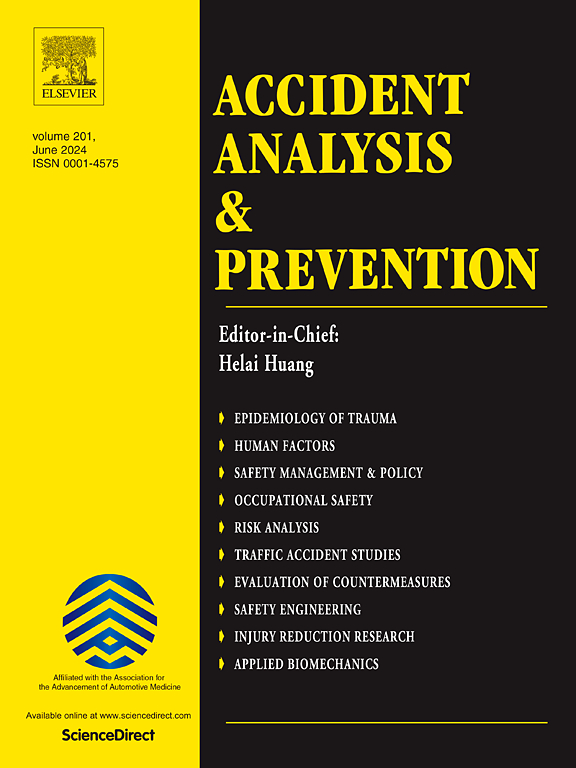基于层次分析法的公路网平交道口碰撞严重程度评价。
IF 5.7
1区 工程技术
Q1 ERGONOMICS
引用次数: 0
摘要
由于火车和公路车辆之间的巨大质量差距,公路-铁路平交道口(HRGCs)的碰撞通常很严重。因此,有必要制定系统的框架来分配联邦和州的资金,以改善风险最高的平交道口的安全。灾害优先排序的常用技术包括灾害指数和碰撞预测公式。一些研究项目和国家交通部门(DOTs)采用混合模型,将碰撞危险指数与预测模型相结合,建立综合安全决策框架。此外,基于预测的碰撞严重程度可能性对平交道口进行排名在很大程度上仍未被探索,部分原因是将碰撞严重程度输出与危险指数相结合的复杂性。本文提出了一种新的混合危险排序模型——层次分析法危险指数(AHP-HI),该模型可作为一种基于碰撞严重程度对平交道口进行排序的决策工具。AHP- hi模型结合了层次分析法(AHP)和竞争风险模型(CRM),后者是一种估计交叉碰撞严重程度可能性的预测模型。使用AHP-HI模型进行风险分析,将北达科他州的公共平交道口分为四个风险级别,其中4.73%的平交道口被确定为高风险。本文章由计算机程序翻译,如有差异,请以英文原文为准。
Evaluating crash severity at highway-rail grade crossings using an analytic hierarchy process-based hazard index model
Due to the substantial mass disparity between trains and highway vehicles, crashes at Highway-Rail Grade Crossings (HRGCs) are often severe. Therefore, it is essential to develop systematic frameworks for allocating federal and state funds to improve safety at the highest-risk grade crossings. Common techniques for hazard prioritization at HRGCs include the hazard index and the collision prediction formula. A few research projects and state departments of transportation (DOTs) have employed hybrid models that integrate crash hazard indices with prediction models to create comprehensive safety decision-making frameworks. In addition, ranking grade crossings based on their forecasted crash severity likelihood remains largely unexplored, partly due to the complexity of integrating crash severity outputs with hazard indices. This research introduces a new mixed hazard ranking model, the Analytic Hierarchy Process Hazard Index (AHP-HI), which serves as a decision-making tool for ranking grade crossings based on their potential for crash severity. The AHP-HI model combines the analytic hierarchy process (AHP) and the competing risk model (CRM), a prediction model that estimates the likelihood of crash severity for crossings. Risk analysis using the AHP-HI model categorizes public grade crossings in North Dakota into four risk levels, with 4.73% of the crossings identified as high risk.
求助全文
通过发布文献求助,成功后即可免费获取论文全文。
去求助
来源期刊

Accident; analysis and prevention
Multiple-
CiteScore
11.90
自引率
16.90%
发文量
264
审稿时长
48 days
期刊介绍:
Accident Analysis & Prevention provides wide coverage of the general areas relating to accidental injury and damage, including the pre-injury and immediate post-injury phases. Published papers deal with medical, legal, economic, educational, behavioral, theoretical or empirical aspects of transportation accidents, as well as with accidents at other sites. Selected topics within the scope of the Journal may include: studies of human, environmental and vehicular factors influencing the occurrence, type and severity of accidents and injury; the design, implementation and evaluation of countermeasures; biomechanics of impact and human tolerance limits to injury; modelling and statistical analysis of accident data; policy, planning and decision-making in safety.
 求助内容:
求助内容: 应助结果提醒方式:
应助结果提醒方式:


